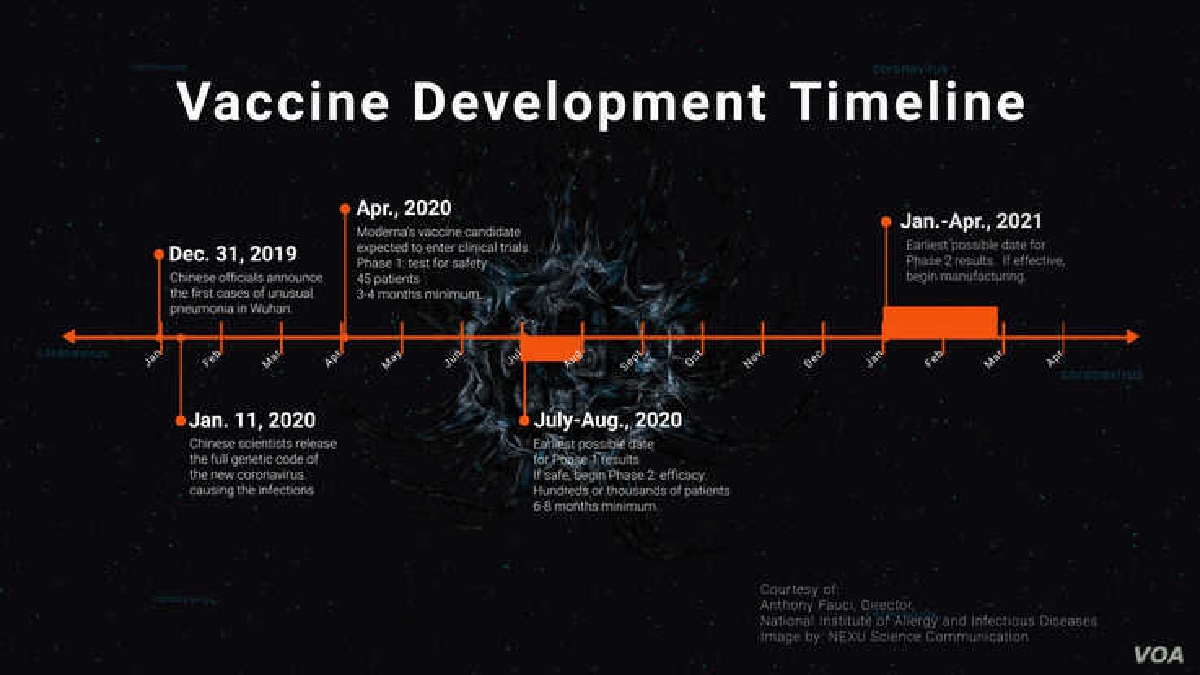• Around 24 January 2020 in Australia, the University of Queensland announced that it is investigating the potential of a molecular clamp vaccine that would genetically modify viral proteins in order to stimulate an immune reaction.
• Around 24 January 2020, the International Vaccine Centre (VIDO-InterVac) at the University of Saskatchewan announced the commencement of work on a vaccine, aiming to start human testing in 2021.
• Vaccine development efforts were announced at the Chinese Center for Disease Control and Prevention, and the University of Hong Kong.
• Around 29 January 2020, Janssen Pharmaceutical Companies, led by Hanneke Schuitemaker, announced that it had begun work on developing a vaccine. Janssen is co-developing an oral vaccine with its biotechnology partner, Vaxart. On 18 March 2020, Emergent BioSolutions announced a manufacturing partnership with Vaxart to develop the vaccine.
• Inovio Pharmaceuticals said that it is developing a DNA-based vaccination in collaboration with a Chinese firm, announcing plans for human clinical trials in the early summer of 2020.
• On 8 February 2020, the laboratory “OncoGen” in Romania published a paper on the design of an vaccine-design with a similar technology like the one used for cancer neoantigen vaccination therapy” against COVID-19. On 25 March the head of the research institute announced that they finalized the synthesis of the vaccine and that they were beginning the tests.
• On 27 February 2020, a Generex subsidiary company, NuGenerex Immuno-Oncology announces they were beginning a vaccine project to create an Ii-Key peptide vaccine against COVID-19. They wanted to produce a vaccine candidate that could be tested in humans “within 90 days.”
• Washington University in St. Louis announced its efforts to develop a vaccine on 5 March 2020.
• On 5 March 2020, the United States Army Medical Research and Materiel Command at Fort Detrick and the Walter Reed Army Institute of Research in Silver Spring, both in western Maryland, announced they were working on a vaccine.
• Emergent Biosolutions announced that it had teamed with Novavax Inc. in the development and manufacture of a vaccine. The partners further announced plans for preclinical testing and a Phase I clinical trial by July 2020.
• On 12 March 2020, India’s Health Ministry announced they are working with 11 isolates and that even on a fast track it would take at least around one-and-a-half to two years to develop a vaccine.
• On 12 March 2020, Medicago, a biotechnology company in Quebec City, Quebec, reported development of a coronavirus virus-like particle under partial funding from the Canadian Institutes for Health Research. The vaccine candidate is in laboratory research, with human testing planned for July or August 2020.
• On 16 March 2020, the European Commission offered an €80 million investment in CureVac, a German biotechnology company, to develop a mRNA vaccine. Earlier that week, The Guardian had reported the US President Donald Trump offered CureVac “‘large sums of money’ for exclusive access to a Covid-19 vaccine”, with the German government contesting this effort.
• On 17 March 2020, American pharmaceutical company Pfizer announced a partnership with German company BioNTech to jointly develop a mRNA-based vaccine. mRNA-based vaccine candidate BNT162, currently in pre-clinical testing with clinical trials expected to begin in April 2020.
• In Italy on 17 March 2020, Takis Biotech, an Italian biotech company announced they will have pre-clinical testing results in April 2020 and their final vaccine candidate could begin human testing by fall.
• In France on 19 March 2020, the Coalition for Epidemic Preparedness Innovations (CEPI) announced a US$4.9 million investment in a COVID-19 vaccine research consortium involving the Institut Pasteur, Themis Bioscience (Vienna, Austria), and the University of Pittsburgh, bringing CEPI’s total investment in COVID-19 vaccine development to US$29 million. CEPI’s other investment partners for COVID-19 vaccine development are Moderna, Curevac, Inovio, Novavax, the University of Hong Kong, the University of Oxford, and the University of Queensland.
• On 20 March 2020, Russian health officials announced that scientists have began animal testing of six different vaccine candidates.
• Imperial College London researchers announced on 20 March 2020 that they are developing a self-amplifying RNA vaccine for COVID-19. The vaccine candidate was developed within 14 days of receiving the sequence from China.
• In late March, the Canadian government announced C$275 million in funding for 96 research projects on medical countermeasures against COVID-19, including numerous vaccine candidates at Canadian companies and universities, such as the Medicago and University of Saskatchewan initiatives. Around the same time, the Canadian government announced C$192 million specifically for developing a COVID-19 vaccine, with plans to establish a national “vaccine bank” of several new vaccines that could be used if another coronavirus outbreak occurs.
• On 23 March 2020, the US government, industry, and three universities pooled resources to access supercomputers from IBM, combined with cloud computing resources from Hewlett Packard Enterprise, Amazon, Microsoft, and Google. The COVID-19 High Performance Computing Consortium is being used to forecast disease spread, model possible vaccines, and screen thousands of chemical compounds to design a COVID-19 vaccine or therapy.

